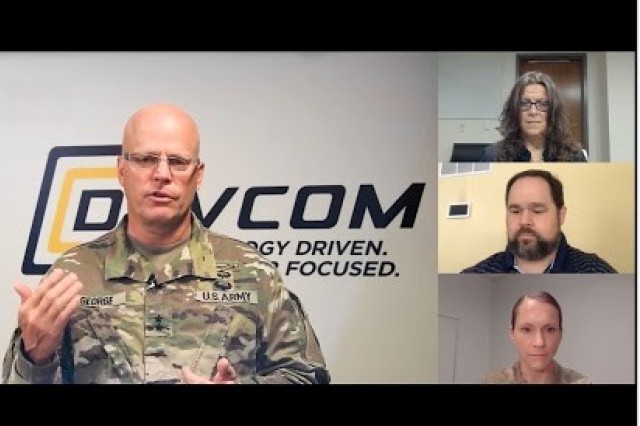ARLINGTON, Va. -- From concealing troop movement with light-filtering synthetics to artificial intelligence-enabled targeting and self-driving robotic tanks, the battlefields beyond 2035 may one day be armed with capabilities often found in science fiction films.
To keep pace with the rapid speed of innovation, these emerging technologies are being closely examined by a future-oriented team of Army scientists, Soldiers, and other tech-experts called Team Ignite, said Maj. Gen. John George, commander of the U.S. Army Combat Capabilities Development Command -- a branch of Army Futures Command, or AFC.
The strategic intent of the general and Gen. John M. Murray, commander of AFC, “is to grow these partnerships across the Army modernization enterprise -- including industry, academia, and allies,” George said. “To this end, we aim to cultivate a culture of connection” with a team of teams approach in Ignite, so collaborators speak “a common language” of modernization.
At AFC, Murray tasked his command to explore “what could be while pursuing new concepts in emerging scientific fields,” George said. The result of which led to the Ignite initiative in the spring of 2019, which aims to integrate technical and operational expertise to deliver overmatch capabilities to Soldiers.
The Army’s 18-month-old team doesn’t just target any specific technology. Instead, it explores the realm of what’s possible by researching how future capabilities will give warfighters the edge against near-peer competitors, George said during the Association of the U.S. Army Annual Meeting and Exposition Oct. 14.
During fiscal year 2021, Ignite researchers will build on five core areas of research, including artificial intelligence, autonomy, and robotics, “underpinned by” data and networks, said Col. Stephanie Ahern, director of concepts at AFC’s Futures and Concepts Center, or FCC.
Although the core areas are defined, “there is a never-ending list of ways we’re using the Ignite philosophy to research” them, George said. “We ultimately want this Team Ignite to become the way we do business. It’s increased collaboration with the right partners and the right events.
“At the classified level, we are looking at threat levels and the evolution of those threats over time,” he added. To do this, “Gen. Murray started a series of future threat deep dives to see very specific threats into the future. We focus on an understanding of where we are with technologies and are conducting deep dive reviews of 17 technology areas with partners from other services.”
The intent of the Ignite workshops is “to pull in all kinds of different voices and ideas” regarding a wide range of sessions and topics, said Jean Vettel, chief scientist for FCC, and provide a place “where anyone can come in and listen and contribute” to the conversation of where capabilities are going in both the medium- and long-term.
“These workshops serve as a foundation for future concepts narratives grounded in the art of the possible,” George said. “They're based on what is being developed in scientific labs both inside and outside the Army” that target future operational challenges, coupled with scientifically-grounded capabilities.
For example, at an integration workshop in March, experts from all warfighting functions were introduced to recent discoveries from several technical areas, like synthetic biology, quantum sciences, and other critical areas of power and energy, Vettel said.
The team was also inspired by synthetic biology designs, such as organisms that can form temporary pathways like bridges, and then eat them away once the mission was complete.
The latest virtual Ignite workshop is set for next month, Vettel said, and will be geared toward how the character of warfare will change by 2035. Ignite is planning a series of virtual workshops for the upcoming year to “allow people from any geographic location [and affiliation] to be involved.”
Moving into the future, cooperative research and development agreements are the “best way for one-on-one collaboration” with industry, George said.




0 Comments